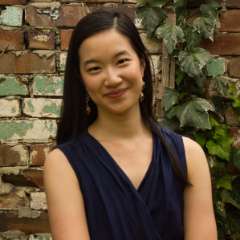Fill your glasses: Opera Australia is on stage again, after almost a year’s hiatus since March 2020. Its comeback is Franz Lehár’s frothy, perennial favourite, The Merry Widow. If operetta could be a glass of champagne, this would be it: light, sparkly, and indulgently bursting with bubbles. For some, the perfect antidote to the year that has been.
This particular production appeared on Australian stages in 2017, with a new English-language translation by Justin Fleming and choreography by Graeme Murphy. Revived this time by Shane Placentino, it moves the action from Lehár’s original Belle Époque (the operetta premiered in 1905) to the Art Deco era, which works well. There is something about the excess, theatricality and ambitious modern optimism of that period that fits the narrative through-line: all that Pontevedrian scheming to keep the widow’s millions feeding the national GDP.
And of course, Art Deco looks beautiful. Lit by Damien Cooper, Michael Scott-Mitchell’s sets are stunning. The embassy is an opulent geometry of gold angles, black marble and mirrors; Maxim’s is slick jade and red velvet stairs; and the widow’s Parisian estate tributes Monet’s Water Lilies. Jennifer Irwin’s costumes are similarly gorgeous, and particularly the widow’s outfits – each is an Instagram-worthy showstopper, from the opening black-and-gold nod to widow’s weeds, the exotic gauzy turquoise of Act 2’s Pontevedrian number, and Act 3’s gold and silver glory. Visually, this production rolls out on a red carpet.
Julie Lea Goodwin sang the role of Hanna, the operetta’s eponymous widow. I have always thought Goodwin was naturally suited to “glamour” roles, with her self-possessed elegance and shimmering soprano. She was very enjoyable as Hanna and the audience loved her sultry Vilja Lied.
Alexander Lewis (who appeared opposite Goodwin in Francesca Zambello's 2019 harbourside West Side Story) was Danilo, Hanna’s troubled former flame who drowns his emotional communication issues in chorus girls and alcohol. Lewis is a confident stage presence and looks the part, singing in a well-rounded, energetic tenor. He and Goodwin have strong stage chemistry and – to my relief for this Murphy-choreographed production where waltz is central to the story – both are good dancers. Productions like this Merry Widow highlight why opera and operetta aren’t always just about the singing – the storytelling reaches full potential when the music is supported by acting and movement.
Stacey Alleaume was a bright and bubbly Valencienne, pursued by Virgilio Marino’s Camille – his tenor is splendid. Benjamin Rasheed played Njegus as the bespectacled, tight-laced public servant with one little weakness. But the real standout was David Whitney’s Baron Zeta. This character is often reduced to a bumbling old fool, but Whitney gave the Baron depth, charisma and humanity. His Baron was unusually competent, kindly and ultimately this production’s most likeable character – a refreshing change from the usual two-dimensional object of audience scorn and pity. It made his ultimate realisation of blindness and betrayal even more affecting.
The choreography is dependably Murphy, who always has fun with glitzy theatrical settings (think of his Tivoli). This theatricality is put to good use with Act 2’s energetic folk dancing and Act 3’s butter-fingered waiters and nods to Weimar cabaret and burlesque. There were also some references to the Australian Ballet’s famous Merry Widow adaptation, in which Murphy danced before becoming a choreographer.
I admit I find the new Fleming translation hits a few jarring notes. Presumably to balance the patriarchal points of the original, there are additions to the script which attempt to characterise Danilo as a man-of-the-people socialist, but which ultimately feel preachily modern and shoehorned in. And in Act 3, Hanna reveals her fortune isn’t lost on re-marriage just to her new husband (as in the original) but to her new husband on condition it be spent on specific charitable causes, which Hanna helpfully lists as if she has memorised the will and trust deed’s sub-clauses. (“Women’s refuges?” breathed my guest “Sure I can believe that was in the original and they were called that in 1920s Europe…”). The effect of all these feminist socialist add-ons is completely undone when the finale ends with the cast leaping about singing (with a backing chorus of can-can girls) how all women are snares.
Ultimately though, this operetta (like many of the genre) is best enjoyed for its lightness rather than its plot plausibility, and it's Lehár's melodies that keep us coming back time and again. And if, as with this production, it's all served up in an Art Deco champagne flute, why not? What a wonderful way to welcome opera back to the Sydney stage and raise our glasses of frothy champagne to a new 2021.




